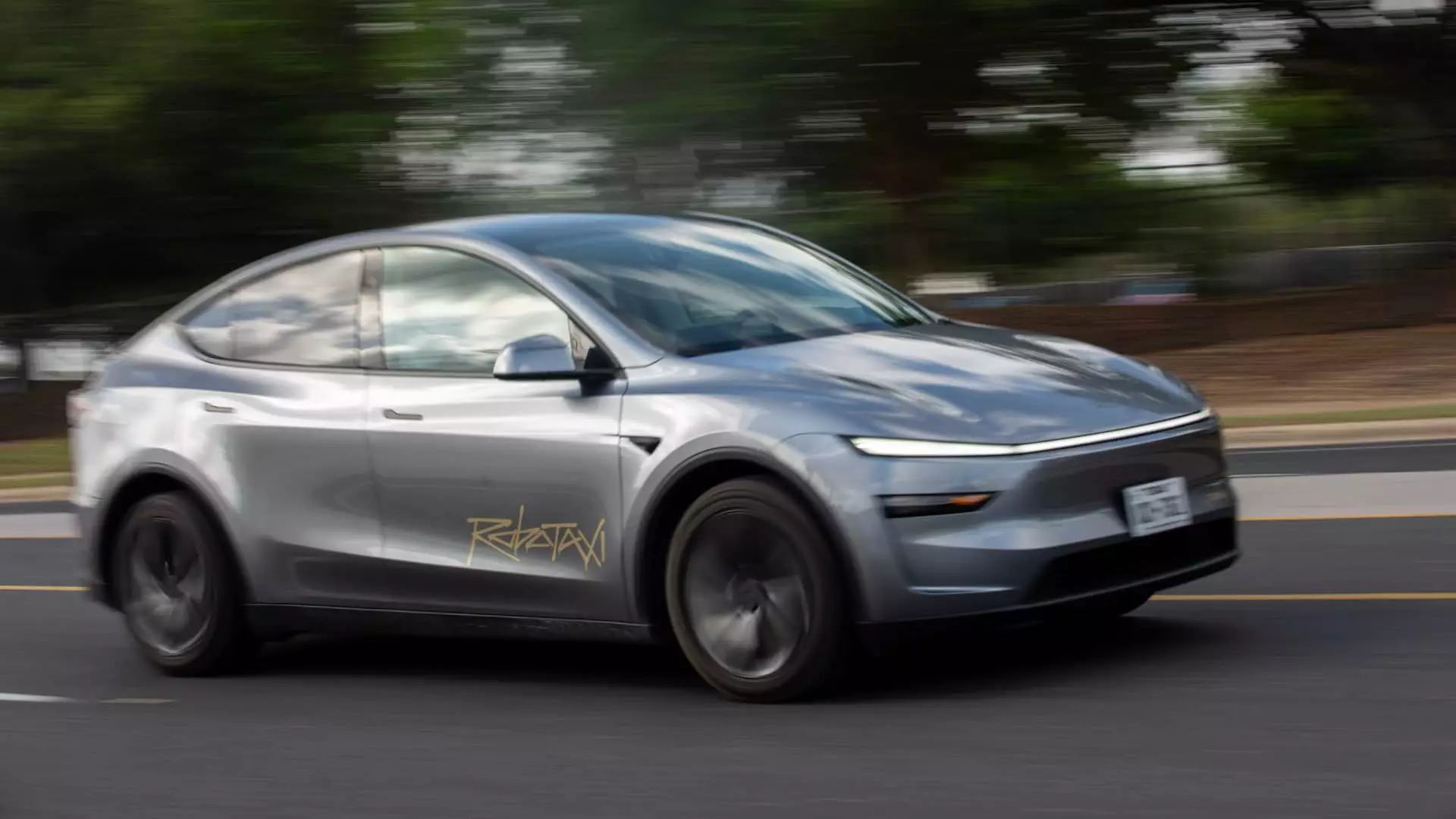Tesla’s bold claims about its self-driving capabilities have long been a source of controversy and skepticism. Despite marketing its vehicles as “self-driving” or “full self-driving,” the reality remains far more complex and fraught with regulatory hurdles. Elon Musk’s recent announcements about expanding a robotaxi service evoke visions of a driverless utopia, yet the truth on the ground in California sharply contradicts this optimism. Regulators, quite rightly, insist that Tesla’s current technology cannot legally or practically carry passengers autonomously on public roads. This disconnect underscores a recurring pattern in Tesla’s narrative: the persistent overhyping of technology that is still in developmental uncertainty.
The core problem is that Tesla conflates assistive driver features with full autonomy—an often misleading tactic that inflates consumer expectations. Despite the company’s enthusiastic claims, regulatory agencies are clear: Tesla’s vehicles in California are not approved to operate as autonomous taxis without a human driver readily available. This disconnect between corporate messaging and legal reality highlights a dangerous tendency to prioritize marketing narratives over factual progress. The implication is that Tesla’s ambitious expansion plans might be less about actual capabilities and more about creating an illusion of technological dominance, which could mislead consumers and regulators alike.
Regulatory Reality Versus Elon Musk’s Narrative
California’s regulatory bodies have made their stance unmistakably clear: Tesla does not have the legal infrastructure to deploy autonomous ride-hailing in the state. The CPUC’s strict rules stipulate that any ride-sharing service involving autonomous vehicles must have a licensed, human-operator at all times. Tesla, currently navigating a maze of permits, is limited to operations with human drivers and cannot legally operate as a full robotaxi service. The company’s notification that it plans to extend operations under existing permits to “friends and family of employees and to select members of the public” does little to hide the fact that these are essentially small-scale, controlled trials—not the nationwide or even regional autonomous service Musk envisions.
Musk’s optimism about rolling out robotaxis in Bay Area markets appears disconnected from regulatory, technological, and practical hurdles. While Tesla’s Austin tests showcase what the company claims as progress, these remain highly experimental, limited to daylight, clear weather conditions, and heavily supervised operations. The regulatory environment in California is stringent for a reason: autonomous systems can be potentially dangerous if prematurely deployed. Tesla’s approach seems to teeter between bold innovation and reckless overreach, risking public safety by rushing into unapproved territory. Tesla’s narrative about a fully autonomous future disregards the complex, fractured process of legal compliance and safety validation, revealing a troubling overconfidence.
The Speculative Nature of Tesla’s Claims and Community Concerns
Tesla’s internal communications, leaked memos, and public statements often paint an optimistic picture of imminent deployment. Yet, these claims clash with public sentiment and local authorities’ cautious stance. In Marin County and other parts of the Bay Area, community leaders are uniformly apprehensive. Many express frustration about Tesla’s opacity—failing to communicate effectively about upcoming services, often leaving local officials and residents in the dark. The lack of transparency fuels skepticism, with community leaders questioning whether Tesla is truly committed to safety or merely chasing headlines.
Meanwhile, Tesla’s competition exemplifies a more cautious approach. Waymo, a pioneer in autonomous ride-hailing, has obtained comprehensive permits, specifically addressing safety and regulatory compliance before expanding. That contrasts starkly with Tesla’s “move fast and break things” mindset, which could ultimately endanger public trust if safety issues emerge prematurely. The regulatory stumbling blocks, alongside Tesla’s ongoing legal battles over its misleading marketing, expose a broader danger: pushing the envelope before the technology is ready risks undermining long-term acceptance and progress in autonomous mobility.
The Broader Implication: A Cautionary Tale for Innovation
Tesla’s saga exemplifies the peril inherent in overpromising technological advancements in the face of unresolved legal, safety, and technical challenges. The company’s ambitious plans reveal a pattern of overconfidence that blurs the lines between aspirational vision and current capability. While innovative spirit is essential for progress, it must be tempered by prudence—especially when public safety is at stake. Tesla’s approach risks creating a culture of hype that can dampen the credibility of autonomous technology, making it harder for genuinely safe and effective systems to gain regulatory approval and public acceptance.
A sober analysis suggests that Tesla’s real progress lies not in revolutionary robotaxis but in incremental advancements, coupled with transparent regulation and rigorous testing. The world is still far from the fully autonomous vehicles Musk envisions, and rushing toward deployments that are not yet ready undermines both safety and reputation. As regulators tighten oversight, Tesla’s entanglements highlight the importance of aligning innovation with accountability. Without it, the promise of true autonomous taxis could remain a pipe dream—glimpsed in overly optimistic media presentations but far from an everyday reality that can safely serve the public.
In embracing a center-right liberal perspective, one must advocate for advances driven by responsible innovation. Encouraging technological progress is vital, but it must go hand-in-hand with sound regulation and community trust. Tesla’s current path, defined by lofty promises and regulatory roadblocks, exemplifies risk-taking that can ultimately backfire, delaying genuine progress and eroding public confidence in autonomous vehicles. Reality check: pushing technology prematurely is not progress; it’s a gamble with societal safety that can turn into a costly setback.

